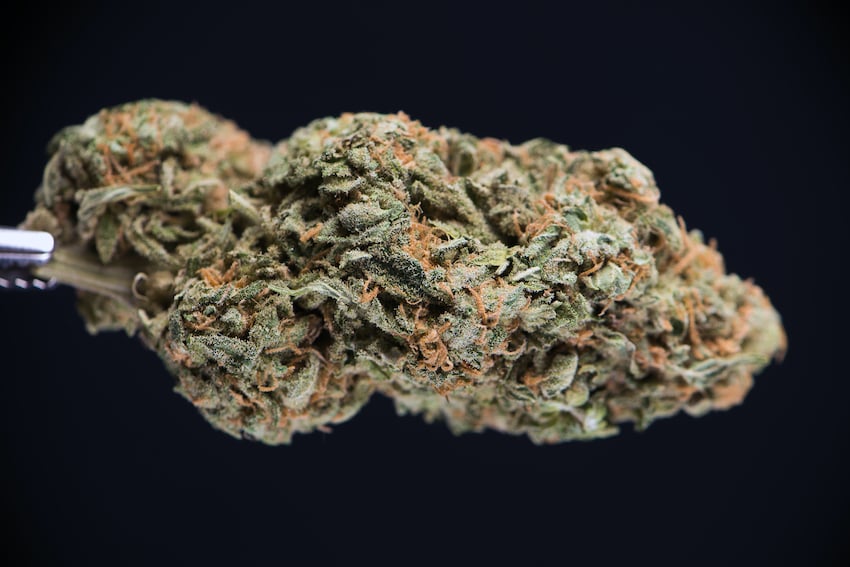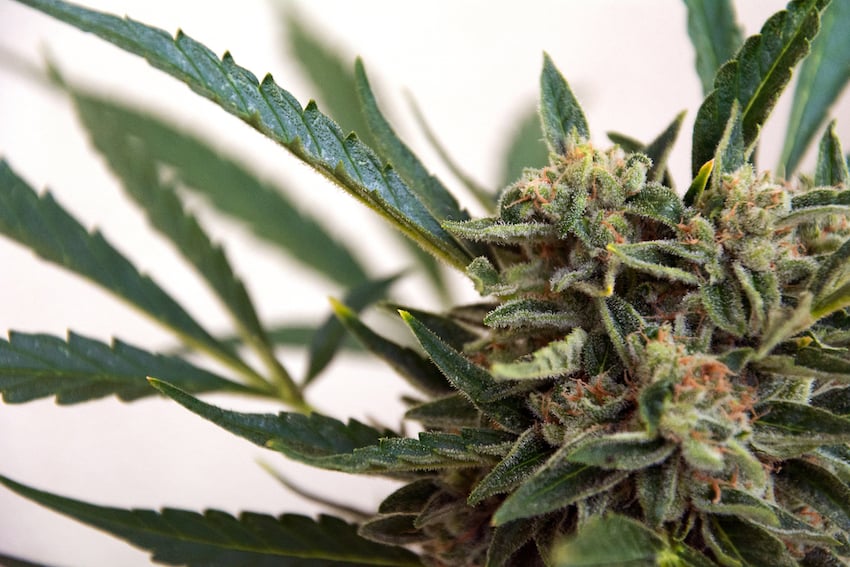White Widow is eye candy for cannabis fans. After all, this strain gets its name from its snow-white “icing” of trichomes. The glistening appearance of White Widow’s buds has made it a perennial favorite in legal dispensaries, especially with customers who love pressing DIY rosin. But you don’t have to be into weed extracts to enjoy White Widow flowers. Since the 1990s, White Widow has been a go-to strain for recreational tokers in Europe and North America. Find out why White Widow has such a long and strong following in the international weed community.
White Widow Strain Outline
- Created by Green House Seeds
- A cross between Brazilian and South Indian landraces
- 60/40 sativa-to-indica ratio
- Average THC percentage: low 20%
- Average CBD percentage: ≤ 1%
- Common terpenes: Myrcene, alpha-pinene, and beta-caryophyllene

White Widow Strain Origins
White Widow first seeped into the European cannabis market in Amsterdam’s coffee shop scene. In the early 1990s, breeders at the Dutch-based Green House Seeds crossed Brazilian and South Indian strains to create the first batch of White Widow nugs. Thanks primarily to its eye-catching appearance, White Widow was an instant hit in the local community and spread to the US market. Cannabis critics gave White Widow dozens of accolades, including the prestigious 1995 Cannabis Cup. Professional extractors also began growing tons of White Widow to take advantage of this strain’s exceptional resin production.
Most lab studies suggest White Widow has a slight sativa dominance of ~ 60% and THC percentages of about 20%. While these stats aren’t as high as other sativa-rich strains, they can still have an overwhelming effect on newcomers. Please also remember White Widow rarely has CBD levels above 1%. Tests now suggest high amounts of CBD can counteract THC’s psychoactive qualities, which is good news for people who are extra sensitive to THC. Thankfully, dozens of legal CBD-rich hemp hybrids have flavors similar to White Widow. Anyone new to cannabis should start with hemp flowers to avoid the risk of paranoia.

White Widow’s Flavor and Aromatics
Although White Widow has a legendary track record in the cannabis community, it’s not primarily known for its aromatics. Remember that White Widow came out long before the craze for Cali-based sweet and dessert strains (e.g., GSC and Gelato). With White Widow, customers should expect to smell “classic hash” flavors, which include plenty of smoke, musk, and spice.
Some tokers also report a distinctive “ammonia” scent when smoking White Widow, but that doesn’t mean this strain is industrial. Unlike something like Sour Diesel, White Widow isn’t particularly gassy or sour. Instead, White Widow tends to hit users hard with its musky, earthy, and spicy notes.
If you’re a fan of fruity strains, White Widow may not be up your alley in terms of flavor. Indeed, those most used to berry-tinged buds may not jive with White Widow on the first few tries. However, even people who aren’t “crazy” about White Widow’s flavors may keep it on hand for its unique effects.

What Are White Widow’s Standard Effects
True to its slight sativa dominance, White Widow delivers a noticeable “head buzz” high. Although White Widow isn’t the most hard-hitting strain, it always induces a cerebral and stimulating sensation. At the correct dose—and with the proper THC tolerance—people may experience heightened focus after taking White Widow. Some tokers even use White Widow as their “replacement” for caffeine. It’s possible to feel a sense of joy and extra energy using White Widow without coffee’s “jittery” qualities.
White Widow has also gained attention in the artistic community for helping with creativity. Painters, musicians, and poets may see their work from a different perspective after taking a hit of White Widow. Also, the energy-boosting effects associated with White Widow ensure users won’t “zone out” shortly after smoking it. If anything, White Widow is more likely to help users boost their productivity.
Just keep in mind White Widow’s sativa-forward properties aren’t always positive for users. True, many people experience enhanced focus and creativity with White Widow, but the wrong dose of this strain can easily send users on a bad trip. Given its sativa dominance and mid-range THC percentage, starting slow with White Widow is always the way to go.

Potential Side Effects Of Using White Widow
As mentioned above, White Widow has a significant risk for paranoia. Since White Widow has a standard sativa “cerebral high,” it’s easy to fall into THC panic mode. The extra introspection White Widow provokes may be too much for new cannabis users to handle. Anyone with a low THC tolerance must approach White Widow with extreme care and caution.
Also, White Widow isn’t the best strain for those struggling with sleep issues. Since White Widow doesn’t have strong indica properties, it’s unlikely to make people feel chill and relaxed. If people already have problems like insomnia or excessive worry, White Widow may exacerbate these issues—especially later in the day. An easy way customers can avoid these issues with White Widow flowers is to research low-THC hemp hybrids. Per US law, CBD hemp strains on sites like Cannaflower can’t have more than ≤ 0.3 percent delta-9 THC. Although CBD hemp flowers aren’t psychoactive, they seem to help customers with many common health concerns, including sleep quality, anxiety, and back aches. Find out more about Cannaflower’s hemp hybrid catalog on this webpage.



